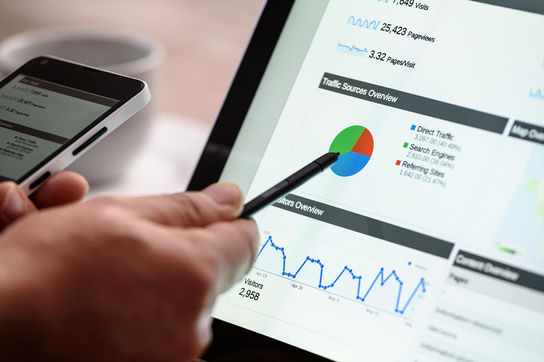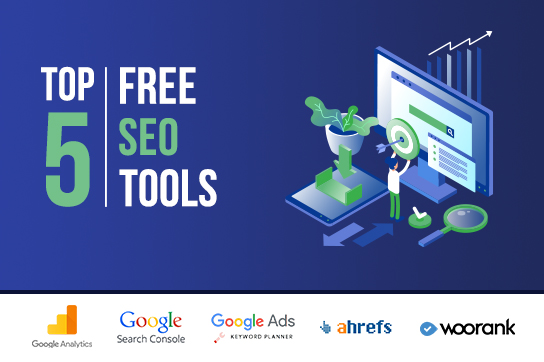COVID-19 is a crisis the likes of which we’ve never seen before. It has been declared a global pandemic and with over 1.3 million cases being reported the world over, no one knows when the devastation is likely to subside. The crisis has also caused the global markets to crash and hundreds of business to shut their doors temporarily.
At such a time, the most important thing is to be sensitive and empathetic first. However, as business owners, we have salaries to pay and food to put on the table. This means that we will have to adapt to the new normal and change our business and marketing strategies to weather the storm, no matter how long it lasts.
We’ll help you break down the steps you should take to protect your business through the COVID-19 crisis and ensure Business Continuity.
Do Not Exploit Fear
The absolute worst thing you can do as a brand is trying to make a quick buck at the expense of others. Whether it is hoarding essential supplies, inflating prices, reselling online. Whatever your product or service, don’t do it. People are extremely sensitive about how brands react at times of crisis and if you aren’t empathetic, they will not take kindly to your brand ever again. This is not the time to kick the competition when they are down. Keep this in mind whether you are running a marketing campaign during a pandemic or extending a new service, do not be tone-deaf to the suffering of people in an attempt to make money.
It’s Not Business As Usual – Adapt Fast
Stop trying to normalize the situation and trivialize it by marketing your business as if everything is normal. Prepare for changes, losses and employees being less than productive at this time. Define the best and worst-case scenarios that could happen and how they would impact your business. Don’t just rely on high-level analysis – drill-down and ask each department about the challenges they face. If the sales team is feeling overly pressured, reduce the targets. If the security may be compromised, invest in cybersecurity. If your communication is suffering, invest in a workflow planning software. You need to change the way you do business to adapt to the new normal.
Audit Your Content Schedule & Pipeline
Do not use the same content that you have scheduled in a tone-deaf manner. If any content or campaign feels inappropriate given the circumstances, push it back, the damage can’t be undone once you hit publish. Protect your customer relationships by being honest with the level of service you can deliver at this time. If the customer needs to expect delays, communicate it to them up front. Work with your creative and content team to produce content that is contextually relevant and helpful in the time of crisis. Check out our article on How To Adapt Your Messaging During the COVID-19 Pandemic and take the appropriate steps.
Prioritize & Pivot
It’s more important than ever to listen to what your customers are telling you. Use social listening to tune in to customer conversations and information that is relevant to your industry. Understand how you can help and try and understand any changes in sentiment. You may want to prioritize some aspects of your messaging and pivot away from others. For example if you have a campaign that is focussed on the outdoor utility of your product shift the focus to how users can use it indoors in their home. For eg: if you run a Fitness Tracker app, you can highlight home workouts and no equipment workout programs more than outdoor fitness exercises such as rowing, running etc.
Evaluate Images and Language
The language you use and the imagery is especially important to reevaluate at this time. Avoid visuals that show people crowded together or touching, relook at copy to ensure that you don’t suggest advice that is not contextual for eg: “Go out and meet new people” is generally great advice but spells disaster during the COVID crisis. Your permanent brand elements and slogan, tagline need not change but your temporary social media campaigns and ads need to be reevaluated in light of the situation.
Be Positive & Authentic
Now is the time to look at where your brand’s heart lies. Remember that vision and mission statement that you crafted while starting your company. Those lofty goals can serve as an inspiration. Be human and vulnerable instead of a robotic voice. You can always be optimistic in the face of the greatest tragedy. Post fun pictures of your team and how they are coping with working from home, how are people staying fit and coping with boredom. Don’t be afraid to use imagery of people smiling, it may help people to envision the end to this struggle and remind them that there is hope.
Be Helpful
Your brand does not exist in a vacuum, look at ways that your brand can help customers during this quarantine. The goodwill that you generate in times of crisis will be your biggest brand asset. For context, if you provide an online learning platform that offers e-learning content to users, you can open up some basic courses free of cost. You can run a promotion stating that you’ve opened up your basic lessons to users which they use to upskill while working from home. This is an amazing way of generating leads for your business in a way that’s sensitive and actually helpful. The leads that come in for the free campaign can be converted to paid customers by using an email drip campaign. The same principle applies even if you market a physical good or product. For example, Mahindra Motors that produces motor vehicles is producing Ventilators to aid the country’s COVID efforts, there are ways that we can be helpful no matter what our business models. The byproduct of being helpful is the kind of positive coverage and social media amplification that no paid effort can ever bring you. As long as you keep the focus on helping people and aren’t trying to profiteer, the audience will appreciate your efforts.
Immediate Changes To Your Strategy
Update all your listing pages and website
Communicate the changes to your business, whether it is closed temporarily or unserviceable or experiencing delays in service. Remember to update your website, digital properties such as social media and also your Google listing to reflect these changes. Google has made it easier for businesses to mark themselves as closed or temporarily closed on their listing pages, contact google support to update your listing to provide the most up to date info to your customers. Do not inconvenience your customer at this time by giving them the wrong expectations.
Constantly Reassess Your Budgets & Campaigns
The way consumers behave is going to fundamentally change in the coming months. Keep a keen eye on the trends to ensure that you are on top of things. For eg: If you are a clothing store, you may see an increase in sales of Pajamas and Casual wear and a dip in the sales of winter wear and sportswear. There may even be certain trends that emerge such as Athleisure wear that may turn out to be your top seller. Based on what the data is saying, you need to pivot your campaigns and push whatever product is selling at this time. You may also need to look at changes in your production to serve the demand, for eg: if you are a food brand, you may see the demand for frozen food shooting through the roof while perishable goods may just be spoiling before they reach the customer. In such a scenario you may have to stop producing perishable goods temporarily until your supply chain gets back to normal. Put in money into what works and stop the bleeding wherever you notice it.
Focus on Reputation
Use social media to ensure that you’re doing your best to communicate with customers. Expect a large number of complaints to pour in through all channels. Even if you are understaffed, ensure that you convey the same on social media. Do not be afraid to be human, be upfront about challenges and set the right expectations to prevent loss of reputation.
Consider Logistics and Last Mile
Ensure you check with every point in your supply chain before making a customer promise. Are your vendors still producing, can you source raw materials, are your delivery partners online? If you don’t have the right information about every touchpoint in your business, it can cost you a customer for life.
Create More Content
Take this time to really focus on the stuff that you can control at this time. If there was a blog that you wanted to start, a case study that you wanted to finish. You will not get a better time than now to get yourself and your team involved in creating content. Map out the gaps that exist in your content calendar, at which stage of the funnel are your customers dropping out? Hold surveys, take notes, get on calls and create amazing valuable content after doing your research. That way once you’re back in business after the Corona crisis, you’ll be able to go in all guns blazing and have an unfair edge over the competition.





